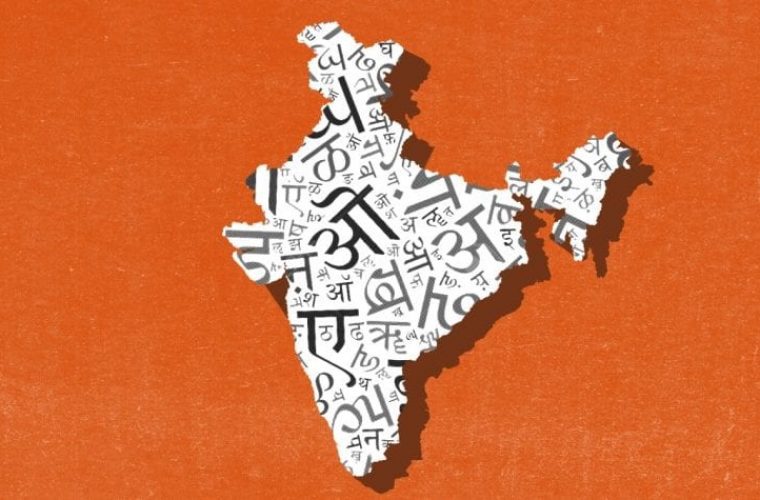New Delhi: The Father of the Nation, Mahatma Gandhi, in his address to the Gujarat Education Conference at Bharuch in 1917, stressed the need of a national language and firmly expressed that Hindi is the only language, which could be adopted as ‘Official as well as National Language of India’ because it is the language spoken by majority of the Indians. Hindi has the potential of being used as a social, economic, religious and political communication link.
The Constitution makers had deliberated the issue of Official Language in detail at the time of framing the Constitution and it was decided that Hindi in Devanagari script shall be adopted as the official language of the Union. This is the basis of declaring Hindi as the official language of Union under Article 343(1).
Moreover, Article 351 directs the Centre to take appropriate steps to promote and propagate Hindi language so that it may serve as a medium of expression and connecting language for all the elements of composite culture.
A harmonious reading of language provisions, particularly Article 343, 344, 348 and Article 351 would show that ultimate goal is the spread and development of Hindi and the gradual switchover to its use for official and legal purposes and as a common language.
Last part of Article 351 says that in developing Hindi, the vocabulary shall be drawn, wherever necessary, primarily from Sanskrit and secondarily from other languages. Primacy has been given to Sanskrit because it is the oldest language of the world and other languages have sprung from Sanskrit.
It is also the fountain source of Indian culture and world’s oldest scripture ‘Vedas’ are written in Sanskrit. Sanskrit has contributed the highest through poetry, philosophy, science, astronomy and mathematics, to human civilization. It is also termed as the Devavani i.e. language of Gods. As many western scholars have observed much that West today vaunts of was borrowed from Sanskrit. Maybe it is not a popular dialect today but it is the storehouse of immeasurable wealth which is an indispensable asset for regaining India’s status in the world. And, this is the reason why Dr. Ambedkar proposed Sanskrit as official as well as national language of India.
At the time of framing and adoption of the Constitution, it was envisaged that English will continue to be used for executive, judicial and legal purposes for an initial period of 15 years i.e. till 1965 only. However, it is very unfortunate that the executive legislature and judiciary have not taken appropriate steps to promote Hindi.
It is provided in the Constitution that the President may authorise the use of Hindi language for some specific purposes. The period of 15 years was prescribed after detailed deliberation so that necessary arrangements could be made for smooth language transition.
The Constitution makers were conscious that language transition in all the fields may not be possible by 1965. They also had the foresight to allow the use of English along with Hindi during the first 15 years. Article 351 of the Constitution speaks of the development of Hindi as the official language of the Union.
The framers of the Constitution had envisaged that Hindi with the help of other Indian Languages would evolve as a composite and connecting language, capable of being accepted by people living in non-Hindi speaking regions.
In 1963, the Official Languages Act was enacted providing for the continued use of English even after the year 1965. The Act also provided that the use of English for correspondence by the Union with the States may be discontinued only after the legislatures of all non-Hindi speaking States passed resolutions for such discontinuance and both Houses of Parliament passed similar resolutions.
However, the Executive neither declared Hindi as the national and connecting language of the country nor took appropriate steps so that all the citizens can read, write and speak Hindi and Sanskrit.
Article 348(1) of the Constitution of India provides that all proceedings in the Supreme Court and in every high court shall be in English until Parliament by law otherwise provides. Article 348 (2) provides that the Governor of the State may, with the previous consent of the President, authorize the use of Hindi language or any other language used for any official purpose of the State, in the proceedings of the high court having its principal seat in that State provided that decrees, judgments or orders passed by such high courts shall be in English.
The Official Language Act, 1963 reiterates this and provides under Section 7 that the use of Hindi or official language of a State in addition to the English language may be authorized, with the consent of the President of India, by the Governor of the State for the purpose of judgments, decrees etc. made by the High Court for that State.
However, no law has been made in this regard by the Parliament so far. Therefore, a foreign language “English” continues to be the language for all the proceedings of most of the High Courts as well as the Supreme Court of India.
Use of Hindi has been authorized long back in the proceedings as well in the judgments, decrees or orders in the High Courts of the States of Rajasthan, Madhya Pradesh, Uttar Pradesh and Bihar. If we take the example of Allahabad High Court, people are allowed to argue in Hindi, if the judge is comfortable in the language. It is allowed there and benefits the litigants. Introducing Hindi will help the lawyers who face difficulties while speaking in English.
Hindi language is a highly emotional issue for 80 per cent citizens of India. It has a great unifying force and is a powerful instrument for unity and national integration. No foreign language should be thrust on Indian Citizens against their will since it is likely to become counterproductive. Language is not merely a vehicle of thought and expression, but for Judges at the higher level, it is an integral part of their decision-making process.
Judges have to hear and understand the submissions of both sides, apply the law to adjust equities. Presently arguments in higher courts are generally made in English and the basic literature under the Indian system is primarily based on English and American textbooks and case laws. Though, 80 per cent judges and advocates in the Supreme Court are proficient in reading, writing, and speaking Hindi. Therefore, advocates should be left free to evolve their own pattern of arguing in Hindi or English.
It is particularly important to note that in view of the national transfer policy in respect of the High Court Judges, if any such Judge is compelled to deliver judgments in a foreign language with which he is not well-versed, it might become extremely difficult for him to work judicially.
On transfer from one part of the country to another, a Judge is not expected to learn a foreign language and to apply the same in delivering judgments. At any rate no foreign language should be thrust upon Judges and they should be left free to deliver their judgments in Hindi. It is important to remember that every citizen has the right to understand the law laid down finally by the apex court and at present one should appreciate that such a language is only Hindi.
The use of Hindi language also facilitates the movement of lawyers from high courts to apex court since they are not confronted with linguistic problems and Hindi remains the language at both levels. Any survey of the society in general or its cross-sections will clearly substantiate the above proposition which does not admit much debate, particularly in the present political, social and economic scenario.
Japanese is allowed in the Japan’s highest court, Chinese is allowed in the China’s highest court, French is allowed in the France’s Highest Court but it’s very unfortunate that Hindi is now allowed in the Hindustan’s Highest Court and a foreign language English has primacy over the Indian Language Hindi, which is spoken by 80 per cent citizens.



















